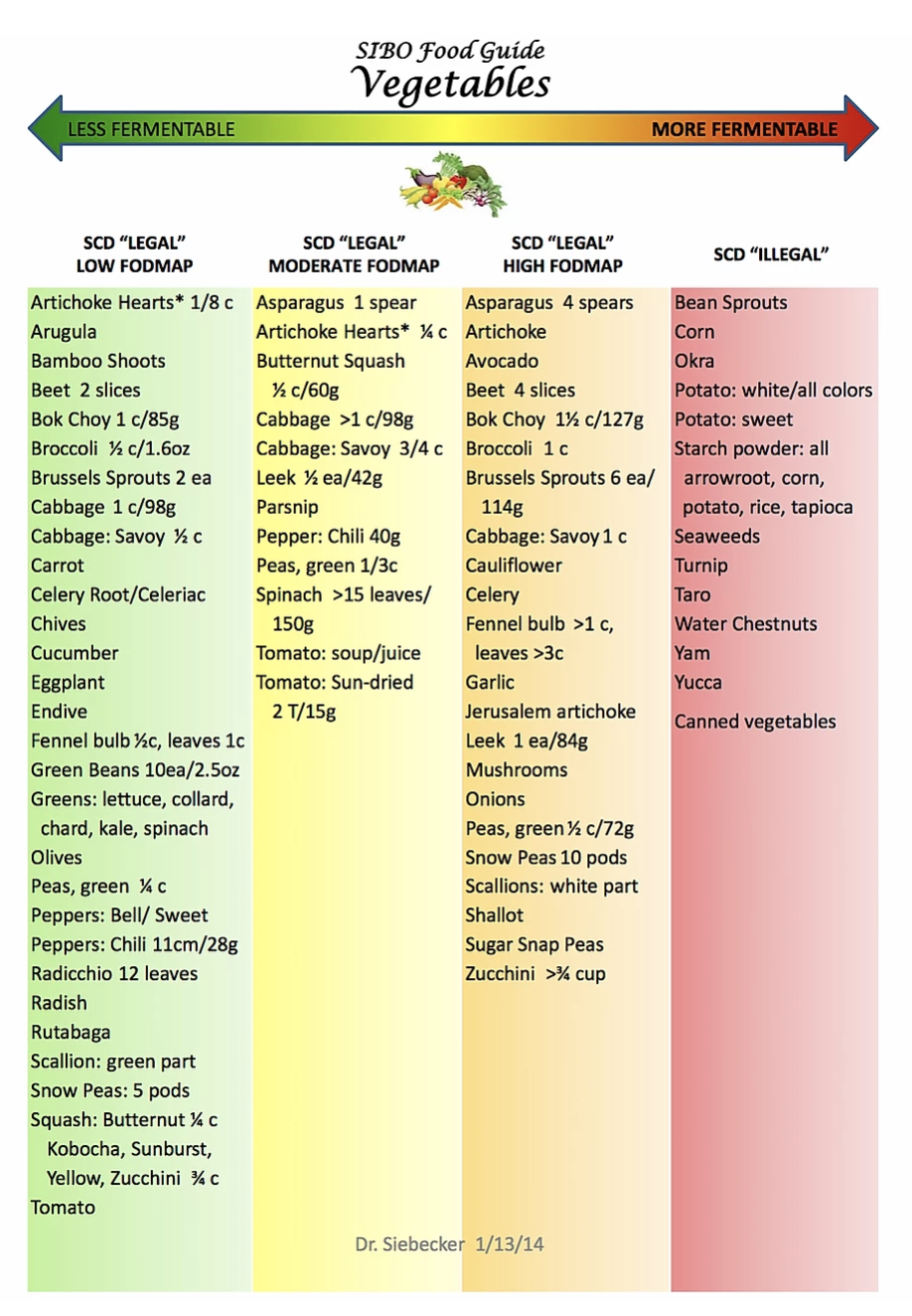SIBO- Small Intestinal Bacterial Overgrowth
The bloating was the worst. Like clockwork, no matter what I ate during the day, I would have to change into yoga pants at 3 pm or spend the rest of the evening in agony. Some nights I could not eat dinner because my stomach was so bloated. It was painful. It was embarrassing.
I thought it was normal for a very long time. I would try to restrict more and more food as I sought relief from the bloating, cramping, gas, and pain. My brain would churn as I would think about the things I had eaten during the day. Was it apples? Beef? Bananas? Cauliflower? How did these healthy foods cause me so much pain every day?
As I completed my training as an FDN, I learned more and more about the gut- the stomach, the small intestine, and the large intestine. I took extra courses from Gurus of the Gut as I tried desperately to fix my poor rumbly tummy. I became a Microbiome Master. I completed the Digestive Intensive. I pored over the FDN course material.
And still, my problems persisted. It was maddening. And common, apparently. Many of my friends were in the same bubbly, stinky boat.

photo via Unsplash by Osman Rana
I learned that most of our friendly bacteria ought to be in the large intestine, where it interacts with the body’s final waste products to exit the alimentary canal. I learned that in times of physical or emotional stress, some of that bacteria can travel backwards through a weak ileocecal valve and start to populate the small intestine, a part of the body that does not normally host a lot of bacteria.
I learned that digestion begins in the mouth. Carbohydrates are broken down here. Proteins are broken down in the stomach. Fats are broken down and digested in the small intestine.
This is the way things ought to work.
But as we wolf down food that is not really food, in stressed states, at odd times, and without proper preparation, our bodies are not able to perform the right chain of events for normal digestion.
And the end product of abnormal digestion can be digestive disorders like small intestinal bacterial overgrowth. SIBO.
There has been some interesting controversy lately amongst functional practitioners regarding the plausibility of SIBO. Is is even a thing?
Ask anyone who is forced to put on yoga pants every day at 3 pm and that person will tell you that there is such a thing as SIBO.
I want to tell you that there is help for you if you are bloated, gassy, and in pain every single day. Or every other day.
One of our rules at FDN is “test, don’t guess”. This year, I have been using diet and supplements with my clients first line, both for cost-effectiveness and for practicality.
That can go a very very long way.
But with the gut, problems are a bit sneakier. Diet alone will not clear SIBO. Sometimes, SIBO can mean an overgrowth of things like
candida
e. coli
or other normal flora.
Other times, SIBO can mean that you have a raging candida infection. Or klebsiella. Or giardia. Or another nasty, virulent parasite. Or the stomach infection H. Pylori. I had it, and it sucked. It ended up being the main culprit in my years of digestive distress and it took a long time to clear. Sixty days. That is a long time! But functional research shows that herbal protocols for SIBO are as effective or more effective than traditional pharmaceuticals, like rifaximin. And that is why it took 60 days. I had a client who ended up going the pharmaceutical route for her SIBO and it did not help at all. Poor thing. She continues to fight, though. And I love her for it.
All you really want to know is what to do about your digestive problems. Right?
Let me share.
1. Test. Please don’t guess.
I am making it mandatory for all new clients to run a GI-MAP as we start working together. Insurance will cover this test, up to $179. Your Flexible Savings Account, should you have one, will cover that extra $179. It is imperative that you fix gut health before moving on to any other aspect of healing. Therefore, this must be part of my standard protocol. Anyone can tell you what to eat. Lots of people do. I find that the more data I have, the better informed of a decision I can make as a practitioner and the better of a protocol I am able to implement. This worked for me, and I am confident that it works for clients. When we know what bad guys are in your gut, we can kill them. And we can support the good guys.
2. Try removing offending foods from your diet.
This is not optimal as it involves a lot of restriction. It is hard for people to stay restricted for a long period of time. We fall off of the wagon and then we feel all ashamed. But for one month, two months? Try this elimination diet and see if it does not help relieve some of the symptoms. There are a ton of SIBO diets online. After much research, this is the best guide I have found. Click on the image to get the whole guide.

Click on the image above to receive the full 8-page SIBO foods document! Thanks, Dr. Siebecker!
3. Try some allopathic relief from supplements.
A lot of people have relief from Atrantil. I have not used it personally but I have read up on it extensively and listened to many interviews with the physician who formulated it. I prefer to get to the root of the problem but sometimes, the pain is too great to not address with something. This will help relieve some of the bloating and pain associated with SIBO or other dysbiosis.

My favorite supplement? A full spectrum digestive enzyme. If you are not going to chew your food until it is liquid, let enzymes help you do the hard work. Liquid food is much less offensive to the gut than larger chunks of undigested food. Um. Gross. Right?
This is the one I use, and the one I recommend to my clients. I have tried four or five enzymes and these are the most effective by far.

4. Use an MMC accelerator
The migrating motor complex is essentially the way your body performs housekeeping of the intestines. Between meals, muscle contractions sweep bacteria and food fragments along the alimentary canal.
But the MMC is damaged in many people with IBS and SIBO. Maybe the bacteria prevents the MMC from doing its job. Maybe years of food-like products have damaged the MMC. Regardless, a faulty MMC is one of the reasons you could have dysbiosis along with constipation. So you could use an MMC product, like I do. Some people have success with these supplements, and some do not. The jury is still out on my own case.
My supplement, MotilPro, has plenty of ginger to stimulate gastric juices and secretions and waves. It also contains 50 mg of HTP, which is a precursor to serotonin. So please ask your doctor if you are taking an SSRI. You don’t want too much serotonin flooding your brain.

(I am doing the MotilPro.)
5. Consider joining my IBS class this Tuesday, July 24 at 8 pm PST (this class has passed!)
We will talk about all things IBS, including SIBO. It is a FaceBook class, which means it is free. And you can ask me all of the questions you want. I love to educate, and I love to talk to groups of women. This lets me do both at the same time. If your questions are burning as much as your tummy, join in our class.
Are you suffering from SIBO? Have you healed from a rumbly tummy? Join in our discussion on Facebook or Instagram and let me know! I would love to hear from you.
Yours in (rumbly tummy) health,
Jennifer






